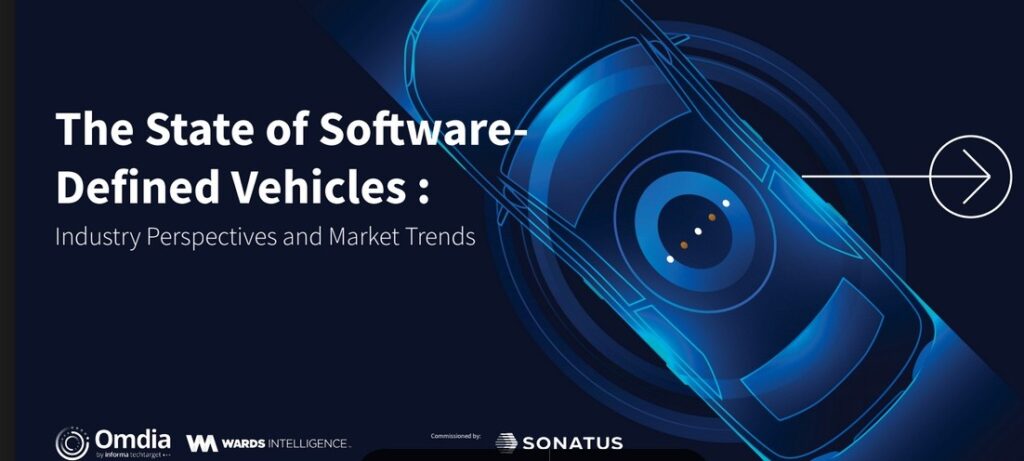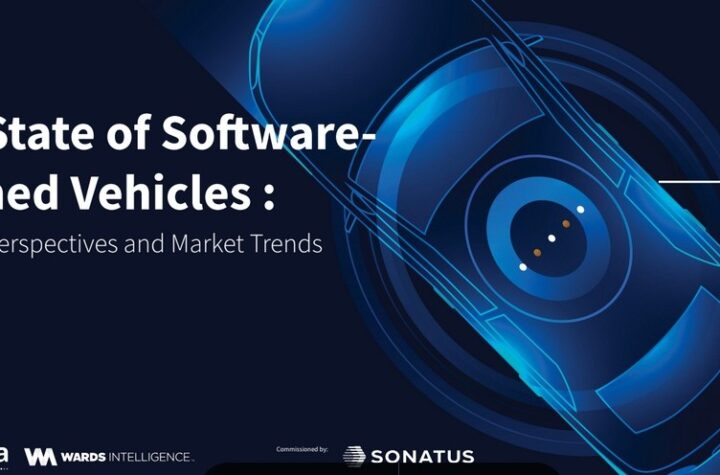
A study sponsored by leading automotive software company Sonatus found a significant shift in perspective: while data management and systems integration dominated the annual Wards Intelligence
Software-Defined Vehicle Survey in 2024, Artificial Intelligence (AI) and software-related capabilities are now at the top of the priority list.
Across all regions, respondents cite AI-based automotive functions, OTA updates, continuous software deployment (CI/CD) and automated software recertification as key elements of future mobility.
Carried out in March 2025, the survey gathered insights from more than 500 automotive professionals spanning Asia, Europe and North America. It explores the industry’s evolving technology priorities, reflecting a decisive shift toward AI, embedded software, and its future potential.
Automotive Industries (AI) asked Sonatus CMO Dr. John Heinlein what the key takeaways were from the 2025 Software-Defined Vehicle Survey sponsored by Sonatus.
Heinlein: This year’s survey shows a clear turning point. The industry is moving past foundational concerns like in-vehicle networks and systems integration.
Instead, there’s growing urgency around capabilities like AI-based functions, OTA (over the air) updates, and continuous deployment.
What’s especially compelling is that the most promising AI use cases, such as smart diagnostics, dynamic performance calibration, and predictive maintenance, are still in the early stages. That suggests we’re only beginning to unlock the full potential of SDVs. We expect its role in in-vehicle intelligence, automation, and personalization to accelerate significantly in the coming years
AI: With 81% of respondents calling SDVs critical but only 23% feeling “very prepared” to deliver them, what do you think is behind this readiness gap?

Heinlein: Many OEMs are still working within architectures that weren’t designed with software in mind. Add to that the challenge of shifting internal structures, retraining teams, and navigating legacy supplier relationships, and the gap makes sense.
It’s not just about new tools or platforms. It’s about rethinking how vehicle programs are developed, how internal teams collaborate, and how long-term value is delivered.
The shift to SDVs, and increasingly AI-enabled vehicles, demands not only new technologies but new ways of working.
AI: How is Sonatus enabling OEMs to tap into these emerging use cases?
Heinlein: We’re helping OEMs put AI to work inside the vehicle in meaningful, scalable ways. For example, with our AI Technician Builder, they can develop intelligent diagnostic agents tailored to specific vehicle models and serving a range of users, from drivers through to OEM service technicians.
These agents synthesize OEM-proprietary knowledge bases with real-time data collected by our dynamic data collection tool, Sonatus Collector, to diagnose issues in real time, suggest remediation steps, and even automate corrective action when appropriate.
It’s a way to bring AI to life in the vehicle cabin and under the hood, without requiring OEMs to commit to dedicated AI software teams to build diagnostics from scratch.
AI: The survey highlights growing confidence in open-source platforms like Linux and Android for safety-critical applications. What are the implications of this shift for the SDV ecosystem?
Heinlein: The shift toward open-source platforms reflects a broader move toward flexibility and interoperability. Open platforms allow OEMs to iterate faster, integrate more partners, and future-proof their development strategies.
At Sonatus, we’ve designed our platform to be OS-agnostic and modular. That lets automakers adopt open-source stacks with confidence while still meeting safety, security, and performance requirements.
It also lays the groundwork for broader AI integration across the vehicle stack, as developers tap into more agile, standardized environments.
AI: OTA updates are becoming more pervasive, but their full potential remains underutilized. How is Sonatus helping automakers go beyond basic OTA to unlock broader value?
Heinlein: Too often, OTA is limited to a subset of vehicle systems, such as navigation or infotainment. Sonatus Updater changes that by supporting what we call “xOTA,” which enables updates across multiple vehicle systems, including ADAS and network configurations.
Our platform supports optimized update sizes called incremental “delta” updates, proactive dry run planning to ensure campaign success, and fine-grained traceability when inevitable failures occur. This new solution empowers OEMs to use OTA in a richer way to add capabilities after shipment, fulfilling the promise of SDVs.
AI: Complexity is now the number one risk in SDV development. How is Sonatus supporting automakers in managing and simplifying this complexity?
Heinlein: We are addressing complexity by rethinking how vehicle software is designed, deployed, and scaled. Rather than forcing OEMs to start from scratch, our modular platform helps them build on what they already have, simplifying integration, accelerating development, and enabling smarter automation.
Our orchestration tool, Automator, lets automakers create new features through automated workflows using existing vehicle systems, without extensive code development. Whether it’s predictive maintenance, personalization, or safety configurations, we make it easier for automakers to deliver innovation without being overwhelmed by complexity.
AI: Regional disparities in SDV progress are striking, with the Asia Pacific region outpacing North America and Europe. What lessons can slower regions learn to accelerate their transition?
Heinlein: The markets have different needs and different approaches. APAC’s speed comes from several advantages: more vertically integrated OEMs, stronger digital ecosystems and, in some cases, more aligned policy environments.
But the takeaway for other regions isn’t to copy that model, It is to modernize within their own context and needs. That means adopting software architectures that can evolve over time, empowering software teams, and rethinking the supplier-OEM relationship to encourage collaboration and speed.
AI: The survey suggests structural challenges like legacy systems and ROI concerns are still slowing SDV progress. What practical steps can automakers take to overcome these barriers?
Heinlein: Start with focused implementations that deliver quick wins. OEMs don’t need to replace their entire tech stack overnight.
By deploying modular solutions, such as enhanced data collection or OTA in one domain, they can demonstrate value quickly and build momentum. The focus should shift from one-time vehicle shipment to delivering value across the lifecycle, where continuous updates and new features create recurring revenue and improve customer satisfaction.
AI: Looking ahead to 2026 and beyond, what role will modular software platforms like Sonatus’ play in shaping the evolution of vehicle architectures and enabling continuous innovation?
Heinlein: Modular platforms will define the next era of automotive. As the transition to software-defined vehicles continues, OEMs need the flexibility to iterate, deploy, and scale software across diverse models and geographies.
Sonatus enables that. Our platform allows automakers to decouple software from hardware, integrate AI and automation, and continue delivering value throughout the vehicle’s lifecycle. That’s what continuous innovation looks like in the SDV world.
To access the full report, click here.
Profile of Dr Heinlein
Before Sonatus, he worked at Arm for 14 years, during which he held several different senior-level roles, including leading the team that was integral to launching the SOAFEE industry initiative for software-defined vehicles.
Prior to Arm, John had an 11-year tenure at microprocessor startup Transmeta, where he held several senior roles across the organization.
John earned his B.S. in Computer Engineering from Carnegie-Mellon University and an M.S. and Ph.D., both in Electrical Engineering, from Stanford University.
About Wards Intelligence
Wards Intelligence is the automotive research arm of Omdia, which is a part of Informa TechTarget, Inc. (Nasdaq: TTGT), a technology research and advisory group. The group’s deep knowledge of tech markets combined with their emphasis on actionable insights is designed to empower organizations to make smart growth decisions. For more information, visit https://wardsintelligence.informa.com/









More Stories
Intellias at Software-Defined Vehicles USA 2025
DOMO at K show 2025: Building the future together
L-Charge and Epic Charging Partner to Expand Immediate Access to Off-Grid EV Charging Infrastructure